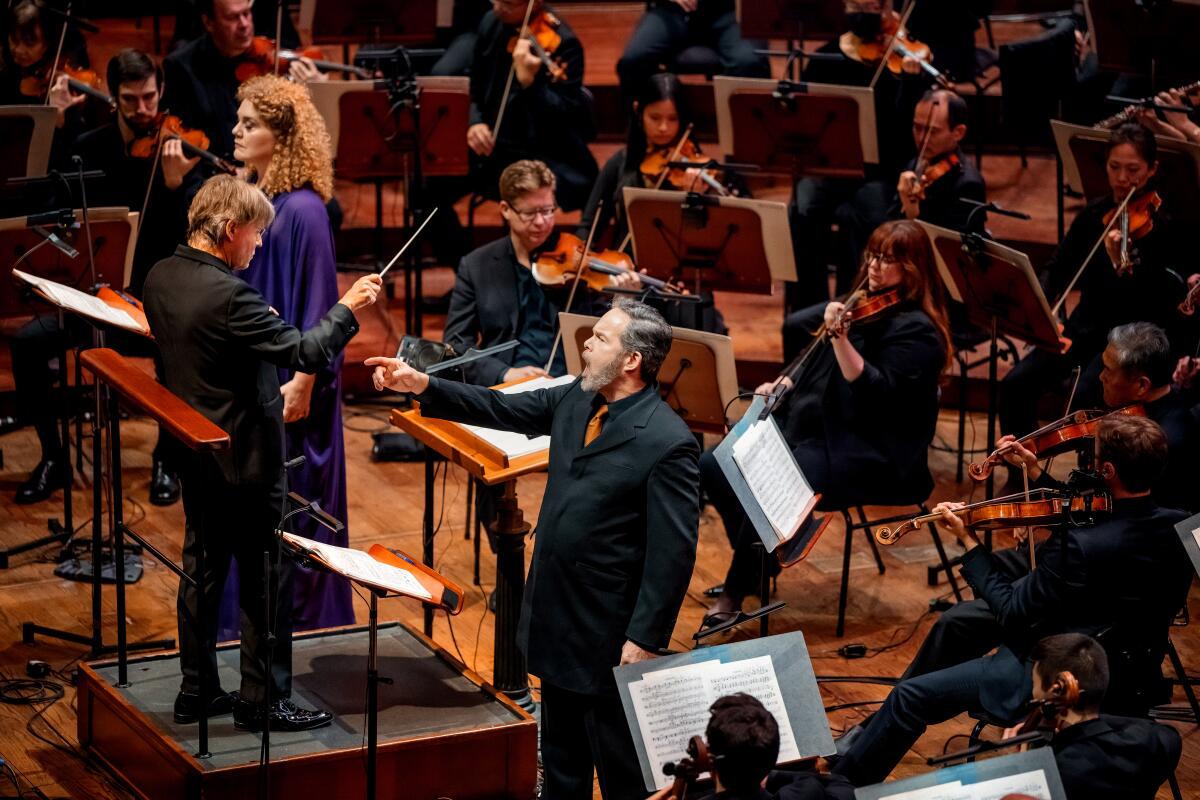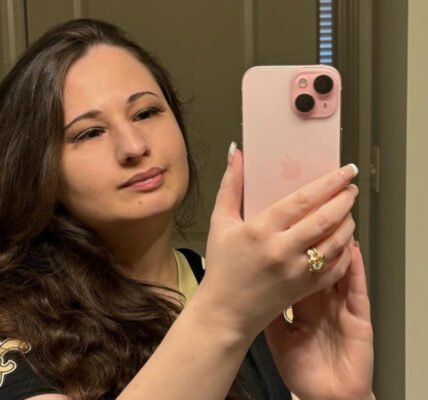It was a cold and wet afternoon as I strolled down forlorn Telegraph Avenue in Berkeley. A countercultural thoroughfare in the late 1960s, the street retained next to nothing of its once colorful flower power. But all of sudden, I smelled incense and heard a recording of Messiaen’s psychedelic “Turangalila-Symphonie.” Annapurna, the head shop that opened in 1969 at the same time as the historic demonstrations at the now boarded-up People’s Park, has survived.
The combination of this specific smell and music, so familiar from my student days here, acted like some kind of nostalgia drug. For an astonishing moment, I was transported back in time. But even more mysterious, it was music, scent and color that recently brought me to the Bay Area in the first place.
The San Francisco Symphony happened to be experimenting with scents in the concert hall for Scriabin’s “Prometheus, The Poem of Fire,” a 20-minute symphony that includes solo piano. The mystical Russian composer experienced synesthesia, the neurological condition in which the brain involuntarily associates one sense with another. Scriabin’s brain — as had, coincidentally, Messiaen’s — ascribed specific colors to specific harmonies.
In “Prometheus,” Scriabin went so far as to include a part for “color organ,” a newly invented instrument that projected colored lights, in his 1910 score. But instead of one color blending into another for dramatic effect, the result was murky gray. Technology has evolved, and Jean-Yves Thibaudet, San Francisco Symphony’s soloist, had long dreamed of adding more senses to the Scriabin mix. Why not scent? The orchestra’s music director, Esa-Pekka Salonen, was intrigued.
I was dubious. Smells linger. As a kid enamored of movie gimmicks, I cajoled my parents to take me to the 1960 Smell-O-Vision “Scent of Mystery,” which had dozens of everyday odors blown from under your seat. By the end, there was an all-purpose stink in the theater. It was disgusting.
Mathilde Laurent, a perfumer at Cartier in Paris, created three original scents for “Prometheus.” Capsules of dry concentrate were projected from diffusers under every third seat. Large wooden devices around the hall chilled and dried the air, so the scents didn’t linger. That sort of worked.
A corona of neon tubes overhead and along the walls of Davies Symphony Hall looked cheesy but approximated Scriabin’s color concept. That sort of worked as well.
“Prometheus” is an extraordinary score, Scriabin’s extravagance going far beyond synesthesia. Written for large orchestra and inspired by Madame Helena Blavatsky’s Theosophical Society, the symphonic tone poem is a fantastical transformation of the Greek myth of Prometheus, who steals fire from the gods. Scriabin’s rich mix of erotic and spiritual ecstasy follows the mystical process of humankind (the piano), in the form of an all-encompassing ego (brass assert in endless refrain an “I am” theme) arising out of imperceptibly quiet, inchoate chaos and merging into earsplitting, delirious joy, in which an otherworldly chorus joins.
The lighting effects are intended to be full of symbolic intent. There are themes of creative principle and will and the like. Blue, for instance, is overcome by the yellow of the sun, and that is supposed to mean something. But nobody’s going to get that.
The scents supposedly have been added for a different purpose. The highly publicized event caught the attention of the weekly British magazine New Scientist, which points out in its latest issue that olfaction bypasses reason. Smell stimulates the parts of the brain tied to memories and emotions, just as Annapurna’s incense had done for me. Presumably, then, the art of olfaction can ready our minds for new experiences.
At a preconcert talk for the Sunday matinee, which I attended, Laurent described her first scent as evoking a sense of anxiety at the start, where the music represents the world before civilization. It was a bit fungal. She selected a perfume she had already invented for Cartier, sweet and sexy, to accompany fire and passion. The last one was grassy for joy.
Maybe it was just me, but the scents landed on the wrong part of my brain, knocking on reason’s door. Scriabin leaves you with enough questions as it is, and here were more. Salonen’s and Thibaudet’s sensational performance of “Prometheus” — transparent, nuanced and colorful — had no need for further tickling the senses.

Michelle DeYoung and Gerald Finley sing as Esa-Pekka Salonen conducts Bartók’s “Duke Bluebeard’s Castle.”
(Brandon Patoc / San Francisco Symphony)
A further revelation came after intermission with an even more impressive concert performance of Bartók’s “Duke Bluebeard’s Castle” that demonstrated the radical difference between theater and synesthesia. The neon lights this time underscored the atmosphere — red for blood dripping in the castle’s creepy rooms, green for grass. Neither annoying nor augmenting, they were merely obvious.
But in one of the most magnificent orchestral climaxes in symphonic literature, when Bluebeard opens a door revealing a vast landscape, Salonen turned to face the audience as he conducted, and the hall burst into brilliant daylight. Dazzling illumination and overwhelming orchestral effect, not color, made this heart-stopping.
Otherwise, this “Bluebeard” needed no theater, thanks to Salonen’s unerring sense of drama, along with ideal soloists — an entrancing Breezy Leigh (the narrator), soul-searching Gerald Finley (Bluebeard) and radiant Michelle DeYoung (Judith).
I was in Berkeley on Saturday for one of Kronos Quartet’s “Five Decades” programs, celebrating the groundbreaking group’s 50th anniversary. The program at Zellerbach Hall included Sofia Gubaidulina’s Quartet No. 4, one of the well over 1,000 Kronos commissions.
It just so happens that Gubaidulina is another Russian synesthete with a strongly spiritual bent, and she included color lighting effects in her score. Among its multitude of innovations, Kronos had pioneered performing its chamber music concerts with lighting design shortly before the 1992 Gubaidulina premiere in Carnegie Hall.
That had been advertised as a big deal in New York. The work uses recorded string quartet sounds on tape along with the live performance. Gubaidulina wanted one kind of lighting for what she called “unreal” sounds of bouncing balls on the strings on tape and another for “real” live sounds. I remember the music from that premiere but don’t recall the lighting being much of anything.
At Zellerbach, Gubaidulina’s quartet was given as part of a wildly mixed program highlighted by the world premiere of Javanese composer Peni Candra Rini’s “Segara Gunung,” which featured her as arresting vocalist. For arresting visual effect, she included shadow puppet theater.
I ran into the Kronos first violinist, David Harrington, at “Prometheus” on Sunday and asked him about the decision to leave out Gubaidulina’s desired lighting. He said Kronos never used Gubaidulina’s lighting even for the Carnegie premiere. He felt it was too garish for this exquisite score.
Live performance is theater. Lighting, movement, design, staging, acoustic projection all have their place, and maybe scent can as well. But you need a director who can translate a synesthesia vision onto the stage.
Salonen, in fact, had just that in a “psychedelic night” at the Hollywood Bowl a quarter century ago, when he was Los Angeles Philharmonic music director. For that, Peter Sellars related “Prometheus” to Native American ritual. The scents were from whatever the party next to you brought for a picnic dinner, or a furtive puff of marijuana.


